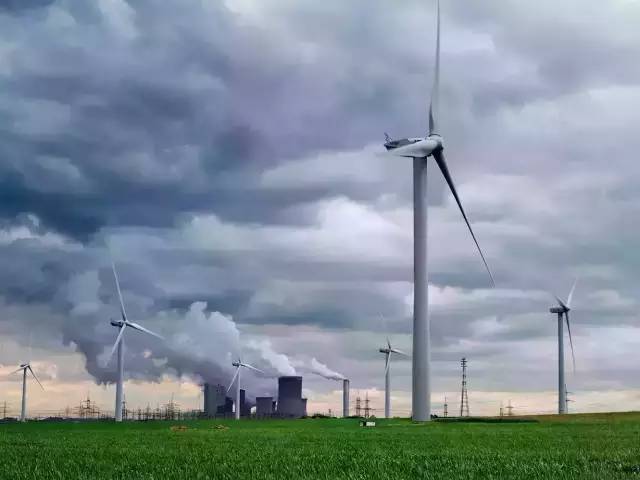

The Renewable Energy Development Fund provides subsidies for the rapid development of China’s renewable energy
, mainly represented by wind and solar power generation. The main subsidies include special funds in national financing arrangements and renewable tariff surcharges imposed by law (later referred to as tariff surcharges)1. Funding for the subsidies largely comes from the tariff surcharge on electricity sales that meet the conditions. Can imposed tariff surcharge meet the demand of renewable power subsidies? We have found that until 2014 there was no financing gap between renewable power subsidies and the theoretical amount2 of tariff surcharges. This means that the surcharge has raised enough money to fund the subsidies. However, the growth rate of installed capacity of wind power and solar power generation will increase by 100% during the period between 2016 and 2020. If the charging rate of the tariff surcharge is not raised, a huge financial gap in subsidies for wind and solar power generation will occur. According to preliminary estimations, this gap will be larger than 100 billion RMB. Therefore, we anticipate that the charging rate will be raised in 2016 or 2017, and the growth rate will be close to the level of 2013.
No gap between tariff surcharge and subsidies in renewable energy up to now
Accelerating the upgrade of tariff standards has reflected the rapid development of renewable energy in China. To meet the need for increased subsidies, the standard of levied tariff surcharge has gone through three adjustments, from the initial 0.002 RMB/kWh to the latest 0.015 RMB/kWh after Sep 1st, 2009 with the adjustment speeding up. According to “Renewable Energy Development Fund Levy Interim Measure” and basic data in power industry statistics3, we have estimated the theoretical amount of tariff surcharge from 2010 to 2014, which is shown in Figure [1]. When it comes to subsidies, the calculation results of released data of NDRC from January 2010 to April 2011 show that wind power accounted for the largest proportion in all the renewable energy generation projects. The reason for this may be due to the few solar energy generation projects in 2010. We convert the total subsidies during this period into an annual amount to represent the subsidies of renewable energy generation projects in 2010, and the result is 15.72 billion RMB. The collection and distribution of subsidies reached balance, consequently resulting in there being no financing gap in the subsidies of renewable energy generation projects in 2010. The power generation of wind and solar energy increased from 49.4 billion kWh in 2010 to 183.3 billion kWh in 2014, an increase of 270% within five years. Assuming that the subsidies increased correspondingly from 15.4 billion RMB in 2010 to 57 billion RMB in 2014, compared with the theoretical amount 72.2 billion RMB shown in the Figure 1, the tariff surcharge theoretically in 2014 met the needs of subsidies.
Will tariff surcharge in 2020 be enough?
Wind power and solar energy generation will keep growing during the 13th “Five Year Plan”. If China can reach the target of 250 GW wind power and 150 GW solar energy power in 2020, then total power generation will reach 695 billion kWh, which is an increase of 280% compared with that in 2014. We estimate that the subsidies for wind power and solar power will increase 280% in the meantime, and therefore the amount of subsidies will reach 216.1 billion RMB in 2020.
The additional charge of the levied tariff surcharge increased from 3344 billion kWh in 2009 to 5135 billion kWh in 2014, an average annual growth rate of 9%. Assuming that the annual growth rate will be 6% during 2014-2020, the additional charge of levied tariff surcharge will be 7284 billion kWh. If the imposed standard is still 0.015 RMB/kWh, the levied surcharge will be 109.3 billion RMB in 2020. Thus a large gap will be created between the tariff surcharges and subsidy demand, with 216.1 billion RMB needed to fund the subsidy demand. Therefore, if the standard of tariff surcharge is not raised, it will be hard for the Renewable Energy Development Fund to support its development.
Theoretical amount of tariff surcharge from 2009 to 2014 (in billion RMB) Note: The qualified electricity consumption for surcharge is calculated by the following method: Sold power quantity minus power consumption in primary industry and in Tibet region, adding the gap between power consumption and power supply of the whole society.
Note: The qualified electricity consumption for surcharge is calculated by the following method: Sold power quantity minus power consumption in primary industry and in Tibet region, adding the gap between power consumption and power supply of the whole society.
尾注:
[1]Renewable Energy Development Fund is applicable to wind power, solar power, biomass power, geothermal power and tidal power generation, rather than hydro power generation.
[2] Tariff surcharge mentioned in this article refers to the theoretical amount of tariff surcharge, namely the requiring imposed tariff surcharge under legal and regulatory norms, excluding those parts that could not be imposed due to various reasons in reality.
[3] Annual data from China Electricity Council. Link: http://www.cec.org.cn/guihuayutongji/tongjxinxi/niandushuju/ Access: 2015.12.20.
Author:Zhao Ang and Lin Jiaqiao




